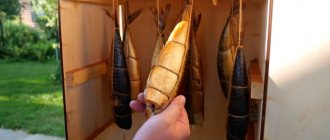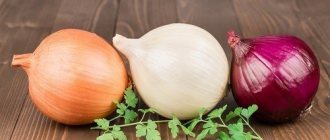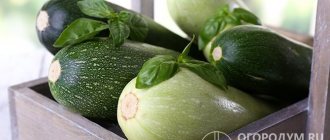Dried fruits have been used as culinary additives and folk remedies since ancient times. And this is no coincidence. So, raisins are storehouse of potassium, magnesium and iron. In addition, due to its calorie content, it can be used as a snack. However, improper storage of both purchased and home-made dried grapes can lead to the loss of all useful substances, unsightly appearance, and rotting. That is why it is so important to know the basic principles of preserving the most popular dried fruit.
How to organize proper storage of raisins
You can get raisins at home, or you can buy the finished product in a store or market. However, before purchasing this dried fruit, it is important to pay attention to its appearance - choose fleshy and wrinkled berries. Raisins with stalks , since they help preserve the beneficial properties of the product for a longer period.
Natural raisins are brown rather than amber in color. Preserving the golden color of light grapes is only possible when preservatives, such as sulfur dioxide, are used during the drying process, which significantly reduces the nutritional value of dried fruit.
What affects shelf life?
The shelf life of raisins is influenced by several factors.
- Product purity. It is very important to carefully sort through the raisins, removing all twigs and debris.
- The dryness of dried grapes is one of the most important factors. If you decide to rinse the product before storing. After completing the “water procedures” it is necessary to dry the raisins. And only then place them in containers and bags.
- Raisin variety. The shelf life depends not only on compliance with certain rules, but also on the type of product. Unfortunately, when purchasing dried grapes, it is very difficult to find out this information. In most cases, the seller cannot provide the data.
- Maintaining the level of light and humidity in the room is the key to successfully storing raisins at home.
- Package.
The last point needs to be considered in more detail. In addition to plastic containers and tin cans, fabric bags, a ceramic pot and a wooden barrel are suitable for long-term storage of raisins.
Containers recommended for storing raisins
The duration of preservation of the beneficial properties of dried grapes largely depends on the storage capacity. The maximum period will be ensured by hermetically intact dishes . For example, to store dried fruits, you can use a glass or ceramic vessel, a closed wooden barrel, a plastic container, a natural fabric bag or a paper bag.
However, it is not necessary to completely deprive raisins of air access. Instead of lids, it is recommended to cover the container with paper or not close the lid all the way. But it is better to tie bags and paper bags tightly .
Learning to choose raisins
Often, when you see a huge variety of dried fruits on the counter of a store or market, you just want to buy more of everything. But here you need to understand that all food products have an expiration date, and raisins are no exception. And in order to maximize the shelf life of this type of dried fruit, first of all, it is necessary to take a responsible approach to its choice.
No matter how much you would like to buy dried fruits that are distinguished by their glossy shine and picturesque beauty, you should not rush to do this. There is a huge possibility that sulfur and preservatives were used to create an attractive appearance when drying them. Such raisins will be stored at home for quite a long time, but will not bring any health benefits.
Use the following information when choosing good dried fruits:
- Properly dried raisins should be brown or light brown in color with a matte finish.
- The berries should be elastic and not damaged.
- Choose raisins that are neither too dry nor too wet, as they will quickly spoil at home.
- The raisins should taste sweet without a burnt or sour aftertaste.
- You should not buy dried fruits at market places along the road or parking spaces, since the berries absorb harmful substances, road dust and debris well.
When purchasing in a store, carefully check the integrity of the packaging and the expiration date of the product indicated on it.
Storage at room temperature
The most convenient and affordable way to preserve the integrity and quality of raisins is to store them in a cool, dark and dry place, in other words, in the pantry . If there is no such room in the house, you can store dried fruit in a cabinet in the kitchen. The main thing in this case is to place the raw materials as far as possible from the stove and electric kettle. It is not recommended that the storage temperature be higher than 17°C .
Please note: storing dried grapes at room temperature requires weekly inspection and sorting . So, it is necessary to get rid of spoiled berries, fruit moths and other pests that are not averse to eating dried fruits.
This method is suitable for storing small quantities of dried fruits, since maintaining their quality with this method is possible only within 2 months .
Is it possible and for how long to store dried apricots, dried apricots, prunes, raisins in the refrigerator?
the girl checks the containers with dried fruits in the refrigerators that are in storage.
The answer is unequivocal - you can. So store prunes in the freezer for an unlimited amount of time. And dried apricots with raisins - until signs of spoilage appear.
In the refrigerator, these dried fruits feel great in a vacuum container for 90-120 days.
Recommended humidity
Raisins are afraid of high humidity. When the berry contains approximately 20% water, a place with 70% humidity . To avoid exposure to moisture, you can place an open package of table salt next to the container containing dried fruits. It will not only cope with excess humid air, but will also slow down the process of bacterial reproduction.
Dried mint leaves located nearby will serve as a preventative against pest infestation . If the dried grapes are too dry, it will be enough to irrigate them with water and place them in the microwave for 1 minute. However, after this procedure, it is prohibited to re-store the berries.
Types of raisins
Depending on what grape variety the raisins are made from, they are divided into four types:
- Kishmish, or sabza, is small, light and seedless.
- Light medium sized raisins with one seed.
- Large raisins with several seeds.
- Shigani, bidana or korinka are dark in color and may vary in taste.
Since moisture evaporates during drying, the concentration of sugar in dried fruit increases. Dried grapes contain 8 times more sugar than fresh ones, which is why they are stored for a long time.
Buy raisins in transparent packaging, or preferably in bulk. This way you will see what condition it is in, smell it, hold it in your fingers and even taste it. Light varieties are usually treated with sulfur, so they must be soaked before eating.
Dry, crumbly raisins without the smell of mold, without harmful larvae, are considered to be of high quality, and they will be stored well at home. The stalk must be present, indicating the highest grade.
Ways to extend the shelf life of dried grapes
prevent early rotting and extend the shelf life of raisins from 6 to 12 months . Dried grapes can be stored in closed packaging only at sub-zero temperatures. Freezing in the refrigerator requires access to air . It must be defrosted naturally by thawing at room temperature. It should be taken into account that deep freezing has a negative effect on preserving the beneficial properties of raisins.
Proper soaking of the berries will also help increase the shelf life of dried grapes . Store-bought raisins may contain all kinds of dust, dirt and even fertilizer. Washing the berries in hot water will help get rid of contaminants.
Washing must be combined with preliminary cleaning of dried fruits from twigs. After which it is recommended to pour boiled water over the berries and leave for 20-30 minutes . Homemade young raisins can be soaked in cold water . Next, the berries must be sorted through a sieve and rinsed again in water. You can dry the soaked raisins in a dry place on a kitchen towel.
Containers for storing grapes
Based on where and in what quantities you intend to store the dried product, we choose the dishes:
Glass jar
Glass does not react with food.
For this reason, transparent containers are great for storing dried berries.
Most importantly, do not seal the dish with an airtight lid, otherwise the product will “suffocate”
Plastic bag
The package does not miss the atmosphere, for this reason it is not suitable for long-term preservation of dried grapes
Textile pouch
The fabric bag perfectly provides air exchange to the product.
And at the same time, it protects grapes from pollution and insects.
Most importantly, tie it fairly tightly with rope
Wooden container
A wooden container with a tightly locked lid guarantees long-term preservation of raisins.
Protects from lighting
Cardboard box
Cardboard boxes lined with polyethylene can be used to transport most dried grapes.
You won't be able to store raisins in them for a long time.
Plastic container
An airtight plastic container protects the product from dampness and third-party aromas.
For this reason, it is convenient to store in the refrigerator
Ceramic tableware
It is attractive to place in a ceramic vessel on the guest table.
However, it is possible to preserve raisins at the air temperature in your room. To do this, you need to cover it tightly with a lid.
Cotton bag
The paper container guarantees the protection of the raisins from increasing dampness through excellent air exchange.
However, with all this, the product does not dry out and will be suitable for many years.
Likewise, this material does not allow sunlight to pass through.
Drying and grape varieties
Each grape variety differs from the other in taste, color and some characteristics. But, regardless of the variety, dried fruits should not be too wet or soft. There is a certain list of signs that indicate that the product is not spoiled, and during the drying of the grapes all the rules and nuances of the process were followed:
- fruits are hard;
- dried grapes are wrinkled;
- the taste is sweet.
When purchasing, you need to pay attention to the color of the dried fruits, since the color of the product is directly dependent on the variety. For example, light seedless raisins turn golden brown when dried.
And the shigani grape variety acquires an almost black color with a slight bluish tint. When you plan to dry the product yourself, you need to rinse the bunch thoroughly and inspect all the grapes for damage. But, the shelf life of raisins, regardless of the type of grape that was dried, does not exceed six months.
Drying grapes yourself
If you have collected a lot of grapes in your garden, then drying them at home will not be a problem.
First you need to carefully sort out all the berries. Damaged ones must be removed, the rest must be washed and dried. Cover a flat surface (tray or pallet) with a sheet of paper, and lay the grapes on top in an even layer in one berry. It is necessary to dry the grapes at home in the sun for 20-30 days.
In order to reduce drying time, you can blanch the grapes in water with the addition of soda. The amount of soda depends on the grape variety and ranges from 0.5 to 1 tablespoon per liter of water. The procedure accelerates the evaporation of moisture from the berries, so they dry out faster.
Raisins made at home yourself should be matte and have a slight waxy coating. When pressed, no moisture should be released from the fruit.











